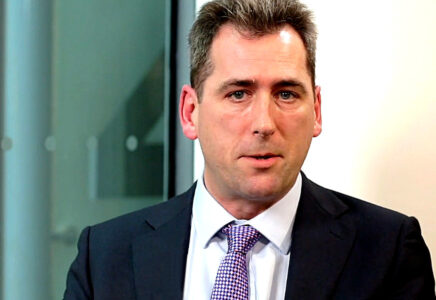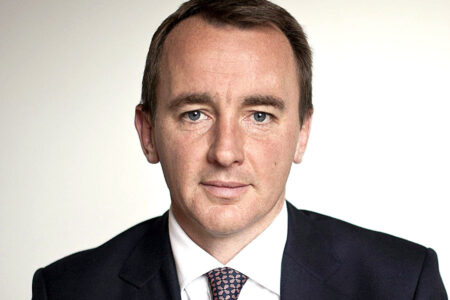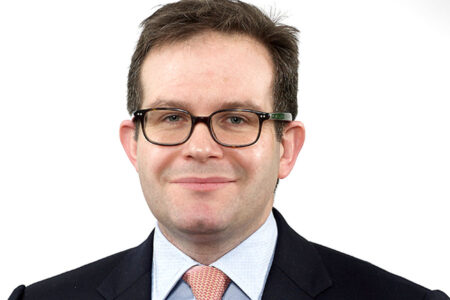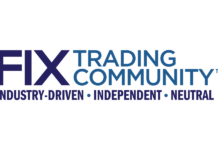Invesco has published its outlook for fixed income markets in 2023, noting that valuations now look more attractive, and yields are higher than they have been for a decade.
Macro-economic backdrop
Inflation is near its peak, if it hasn’t peaked already. Supply chain issues are largely resolved, inventories are building up, and spending will likely fall as rises in the cost-of-living weigh on the consumer.
Moderating inflation would allow central banks to soften their stance, and some of our fixed income teams are suggesting that interest rates could peak in the first quarter of next year. But it is notoriously difficult to predict a Federal Reserve (Fed) pivot. Investors will be watching the data closely so that they can respond.

Paul Syms, head of fixed income ETFs at Invesco says, “We do not know exactly when the Fed will pivot from raising interest rates, but it’s likely to be driven by inflation, so any sign of improvement there could trigger a shift in investors’ risk appetite.”
Without pause for rest, the conversation is now evolving to incorporate concerns about slowing growth and recession. The path to a soft landing is narrowing and, as soon as the pendulum swings from inflation to negative growth, fixed income is where many investors will want to be!
Outlook for government bonds
The rise in yields over the course of the year has meant that government bonds are now offering attractive levels of income. For example, the 10-year Treasury yield is now just over 4%, versus 1.5% at the start of the year and 2.6% as recently as early August.
With recession the most likely scenario heading into 2023, government bonds would generally be expected to fare well. This is because they’re usually supported by more accommodative central bank policy and “safe haven” buying. That historical behaviour may be repeated if uncertainty persists around inflation and interest rates.
Outlook for investment grade credit
Credit spreads have widened significantly this year and, outside of crisis periods like 2008, have rarely been wider than they are today. This is creating good income opportunity for corporate bond investors. Indeed, it is worth remembering that the spread on corporate bonds is paid over the government bond yield. Government bond yields have also risen considerably over the course of 2022, making overall yields very attractive.
Of course, it is important to remember that wider spreads reflect an increased level of credit risk as we navigate a challenging macroeconomic environment. However, today is not like previous crisis periods. The banking system is secure and well-capitalised and companies have been relatively cautious in their approach, building up balance sheet strength.

Michael Matthews, co-head of fixed interest at Invesco says, “The risks this time are not systemic. That gives us confidence to buy corporate bonds whose yields are now 4-6% in many cases”.
There could be pockets of regional opportunity – spreads have widened[1] more in Europe than the US as a result of the ongoing war in Ukraine, greater sensitivity to the energy crisis and heightened growth concerns. Given that corporate fundamentals remain robust with downgrade concerns well contained, these markets could prove attractive.
Outlook for high yield and subordinated debt
The high yield market is now living up to its name. Yields in the asset class are higher than they have been for a long time. This is creating opportunities for investors who are willing to increase the risk profile of their portfolios.

Thomas Moore, co-head of fixed interest at Invesco says, “For riskier bonds such as high yield and subordinated bonds, yields are in the high single digits”.
The risk for this asset class is that economic weakness could lead to credit stress and defaults. Thorough credit analysis will be important in allowing investors to selectively favour companies with balance sheets strong enough to weather the storm.
Additional Tier 1 contingent convertible bonds, often referred to as AT1s or CoCos, might be an interesting segment for investors looking to increase risk in search of higher yields. These hybrid securities are issued by European financial institutions and act as a readily available source of bank capital in times of crisis.
Commenting on subordinated debt, Invesco’s Syms adds, “We believe yields on AT1s are currently attractive both outright and relative to traditional high yield, and any signs of an end to central bank rate hikes should be a positive for the market”.
Outlook for emerging market debt
US policy and rate developments will be influential in shaping the outlook for emerging market debt – something that investors will be watching closely.

Wim Vandenhoeck, senior portfolio manager, global debt at Invesco says: “We believe that a reduction in US rate volatility, as opposed to the absolute level of interest rates, is critical for sustained performance in emerging markets”.
While there could be volatility over the next few months, the opportunity in EM local debt over the medium and long term looks significant. Several factors underpin this:
Inflation is starting to moderate in some developing regions, namely Latin America and pockets of Central and Eastern Europe (CEE).
The value created from an absolute income and return perspective has been meaningful.
The environment of widespread idiosyncratic country news stories and return dispersion provides a fertile landscape for active managers to extract performance alpha in the asset class.
What are the main risks?
Runaway, unanchored global inflation and a deep protracted recession are the main risks for the asset class. Untenable inflation would force central banks to continue rate tightening, putting pressure on absolute rates while further restricting financial conditions and ultimately growth. Similarly, a sustained global recession and “flight to safety” investor behaviour would also be disruptive.
Outlook for senior loans
While there are questions around the Fed’s policy to increase rates, with an increasing number now arguing that inflation is reaching its peak, the market still expects at least another 150 basis points of rate increases before a levelling off in 2024.
Higher interest rates would drive higher levels of income for senior loan investors, due to the floating rate nature of the asset class.

Kevin Egan, senior portfolio manager, senior secured bank loans at Invesco says, “We expect coupons to continue to increase as a hawkish Fed attempts to quell inflation”.
If the Fed continues to raise interest rates, investors may start to become concerned about issuers’ ability to service their debt. However, as highlighted in the below table, the average borrower has entered this cycle in a strong position. Interest coverage ratios at the end of 2021 were near their highs, leaving companies with sufficient ability to absorb higher interest expense.
Furthermore, as the world braces for a recession, the senior secured status of this asset class could leave it looking more attractive to investors than other high yielding asset classes. Indeed, senior loans are secured to underlying collateral, which means they are the first part of the capital structure to be repaid in the event of a default. While defaults are still very low, the secured nature of the asset class has translated to higher historical recovery rates (60-70%) compared to other subordinated asset classes.
©Markets Media Europe 2022
©Markets Media Europe 2025













